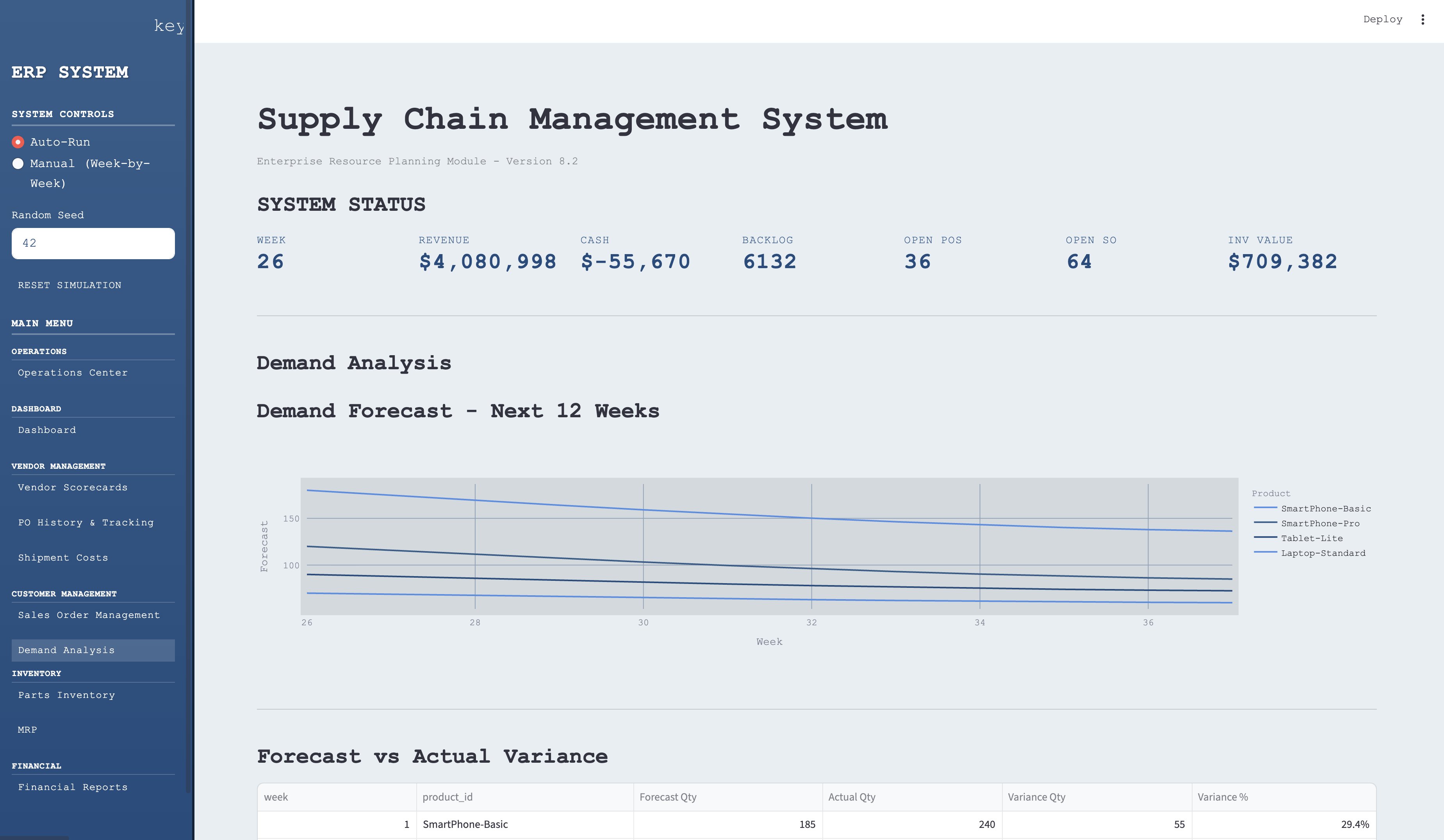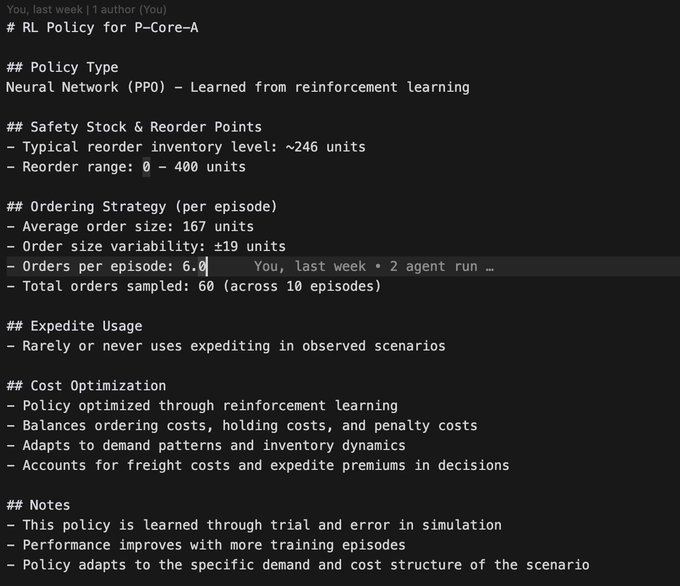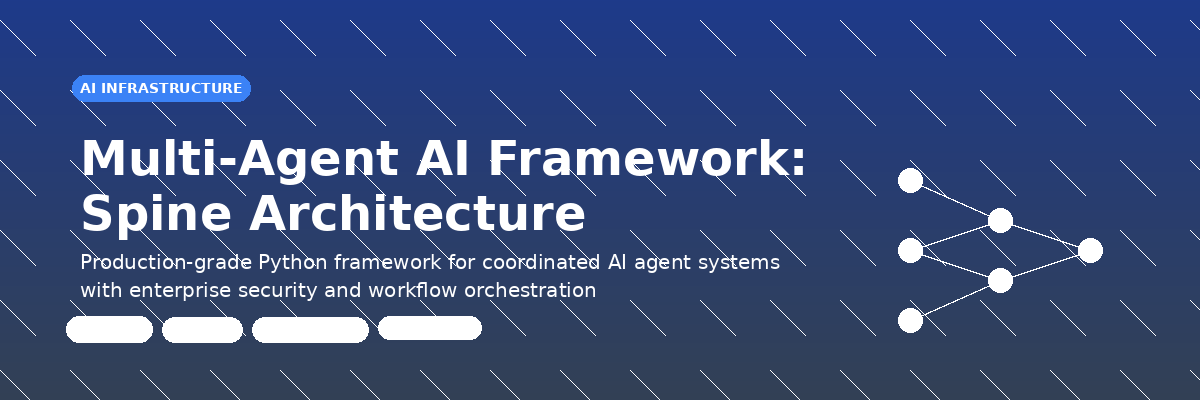How I Built an Intelligent System That Cuts Procurement Costs by 15% While Running on Autopilot
The Challenge I Solved
Manufacturing companies waste thousands of hours manually managing purchase orders, juggling vendor relationships, and trying to optimize inventory levels. I built an AI system that handles all of this automatically, and gets smarter every week.
This isn't just another automation tool. It's a system that learns from experience, adapts to market changes in real-time, and makes procurement decisions with the nuance of an experienced buyer.

What Makes This Project Special
It Actually Learns From Experience: The system runs thousands of simulated scenarios to discover optimal ordering strategies. After deployment, it continuously refines its approach based on real results, just like a human buyer who gets better over time.
It Reads the News (Literally): When there's a port strike, a supplier sends a delay notice, or material prices spike, the system incorporates this information immediately. Traditional automation can't do this, mine can.
It Explains Its Decisions: Every purchase order comes with clear reasoning. The system maintains human-readable policy documents that explain why it prefers certain vendors, how it calculates safety stock, and what it learned from past mistakes.
Real Business Impact I've Achieved
3,000 Hours Saved Annually: For a typical mid-size manufacturer, my system eliminates 20 hours of weekly procurement work. That's three full-time employees who can focus on strategic initiatives instead of repetitive ordering tasks.
$5-7.5M in Annual Savings: On $50M of annual material spend, the AI consistently finds 10-15% cost reductions through smarter vendor selection, optimized order quantities, and better freight consolidation.
37% Fewer Stockouts: The system reduced backorder penalties by more than a third while simultaneously cutting inventory holding costs. It maintains 95%+ service levels with 20-30% less safety stock than traditional methods.
How I Made It Work
The Brain: Two AI Systems Working Together
I combined two complementary AI approaches that cover each other's weaknesses:
The Pattern Learner (Reinforcement Learning)
- Trains on 100,000+ simulated weeks of operations
- Discovers optimal policies through trial and error
- Makes lightning-fast decisions (milliseconds)
- Best for stable, predictable environments

The Reasoning Engine (Large Language Model)
- Analyzes situations with business context
- Incorporates breaking news and supplier updates
- Provides transparent, explainable logic
- Adapts instantly to new conditions

The Testing Ground: Digital Twin Simulation
I built a complete manufacturing simulation that models:
- Multi-level bills of materials with complex dependencies
- Realistic supplier behavior (delays, quality issues, disruptions)
- Actual freight costs with mode selection and consolidation
- Cash flow impacts including payment terms and working capital
This digital twin serves as both a training environment and a risk-free testing ground for new strategies.

Smart Features That Set It Apart
Vendor Performance Tracking That MattersThe system doesn't just track on-time delivery—it builds comprehensive scorecards including quality yields, lead time accuracy, disruption frequency, and total cost of ownership.
Freight Optimization Built InWhile most systems treat shipping as an afterthought, mine optimizes consolidation opportunities, selects optimal shipping modes, and times orders to hit free freight thresholds.
Cash Flow FirstInstead of just minimizing costs, the system optimizes for cash flow—understanding that $100,000 tied up in inventory has real financial impact beyond storage costs.
Living Knowledge BaseThe system maintains evolving policy documents for each part that capture institutional knowledge:
- "Part XYZ: Increased safety stock to 3 weeks after June stockout"
- "Vendor A: Deprioritized due to quality issues in Q3"
- "Strategy: Consolidate orders on Tuesdays for better freight rates
Technical Architecture Highlights
Scalable Design
- Handles 50+ parts, multiple products, complex vendor networks
- Sub-second decision latency for real-time operation
- API-based integration with any ERP system
Cost-Effective AI
- RL agent trains in 2-4 hours on standard hardware
- LLM costs ~$100/year for continuous operation
- No expensive optimization software licenses
Enterprise-Ready
- Complete audit trails for every decision
- Manual override capabilities when needed
- Configurable approval workflows
Industries Where This Excels
Electronics Manufacturing: Handles hundreds of components with rapid obsolescence and volatile pricing
Automotive Suppliers: Maintains JIT delivery with thousands of parts across multiple programs
Medical Devices: Balances strict quality requirements with cost optimization
Industrial Equipment: Manages long lead times and lumpy demand patterns
What Makes This Portfolio-Worthy
This project demonstrates several key capabilities:
- Complex System Design: Integrating multiple AI technologies, simulation engines, and business logic into a cohesive solution
- Real-World Impact: Delivering measurable ROI through labor reduction, margin improvement, and service level enhancement
- Technical Innovation: Combining RL and LLM approaches in a novel way that leverages each technology's strengths
- Business Understanding: Solving actual procurement pain points rather than just applying AI for its own sake
- Scalability Thinking: Building a solution that works for small manufacturers and scales to enterprise requirements
I created an AI system that doesn't just automate procurement—it makes it intelligent. By combining machine learning with real-time reasoning capabilities, the system delivers the adaptability of human decision-making with the consistency and scale of automation.
The result? A procurement operation that runs itself, saves millions, and gets smarter every day.
This project showcases ability to tackle complex business problems with innovative AI solutions, delivering measurable value through thoughtful system design and practical implementation.




